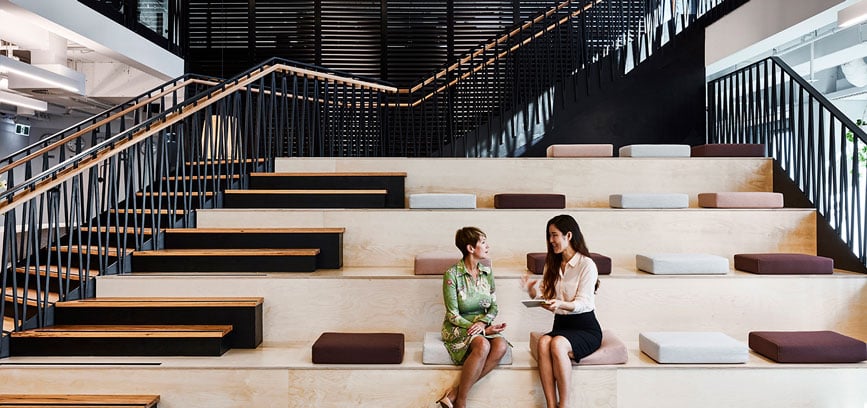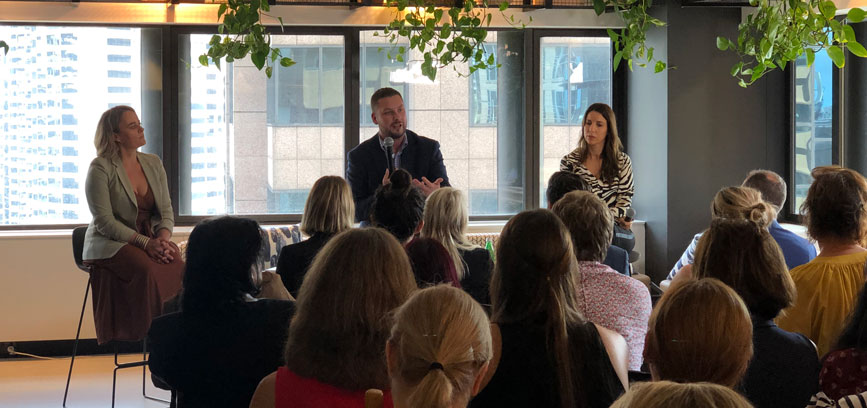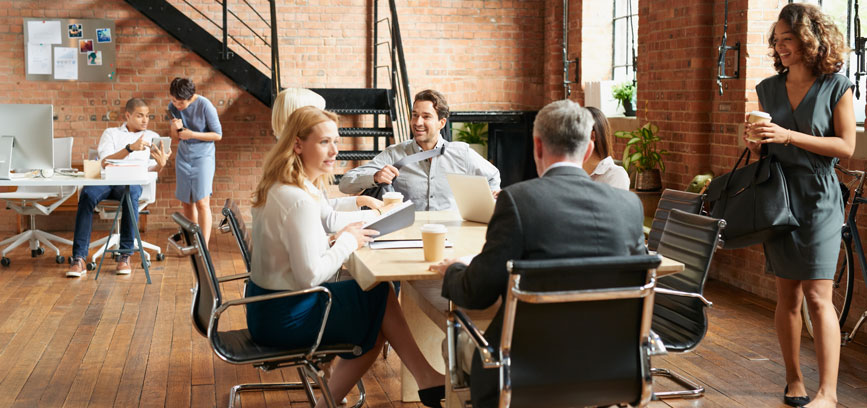Design File: ELMO
“ELMO HQ has realised more connectivity and community engagement than I had ever hoped for.”
Monica Watt, General Manager HR and Admin, ELMO
As one of the fastest-growing HR tech companies in the region, providing innovative cloud HR and payroll technology to more than 1000 organisations across Asia-Pacific, ELMO were quickly outgrowing their space. As well as moving to a more centralised location in the Sydney CBD, ELMO wanted a fit-for-purpose space that would re-energise their employees (or “ELMOnians”, as they’re affectionately called), and help keep the company on its path to growth.
Before Axiom…
Having experienced exponential growth over the past few years, ELMO were fast outgrowing their original headquarters in Bondi Junction. But ELMO didn’t simply want a bigger space – they wanted a space that would truly reflect their personality, culture and values. They wanted a space that would foster connection and collaboration, increase engagement, and also be highly adaptive to each ELMOnian’s preferred way of working.
There was also the added challenge of a relatively short lead time – with ELMO growing so quickly, they only had a timeframe of 12 weeks in which to bring their vision to reality.
Axiom worked closely with ELMO, conducting in-depth workflow and organisational studies to fully understand ELMO’s needs and help them achieve their objectives.
“The Axiom team was great to work with from the commencement,” says Monica Watt, General Manager HR and Admin of ELMO. “They were engaging and responsive to our needs … [and] honest about what they had and had not done. Once they captured our thoughts and concepts … we then worked together to continuously evolve the design. The space is a combination of our ideas and their design magic coming together.”
After Axiom…
One of the most important traits ELMO wanted to cultivate in their new space was connectedness and collaboration. With this in mind, the Axiom team designed a central town hall at the very heart of ELMO’s new home, with tiered seating where employees can gather. This space is connected to a breakout zone on another floor by a staircase, further emphasising the idea of connectedness.
Annelie Xenofontos, Axiom’s Senior Workplace Strategist, explains the team’s approach: “We wanted to connect the Elmonians by creating a vertical village through the two floors. The continuous louvred finish across the two floors achieved that visual connection and was accentuated with the larger cutout in the concrete slab.”
Employee wellbeing was also highly important to ELMO, with the attraction and retention of top talent being a key objective of the new office. To that end, the design included a café and community space where staff can relax and socialise, and a wellness room where they can practise yoga and meditation. As per ELMO’s request, the meeting rooms were also placed at the core of the design, to ensure that employees could be seated close to natural light.
“I love that every day from morning through to afternoon, I see our people enjoying a cuppa, working, talking, and sharing the space. There is a spot for everyone and everything,” says Watt.
To reflect ELMO’s growth and maturation, a new colour scheme was devised, keeping true to the company’s history and evolution while showing the company’s progressiveness and innovation. The use of green and greenery throughout makes the space feel calm and inviting.
Axiom also future-proofed the new HQ, ensuring it is flexible enough to incorporate more employees as the company continues to go from strength to strength.
“The greatest success was hearing the oohs and ahs from our people. I will be honest, I was overwhelmed with various emotions on day one – I sat on the tiered seats and just watched the people enjoying their new space,” says Watt. “I am in awe of what we have created and the opportunity it presents.”
At a glance…
- Increased connectedness and collaboration achieved
- Emphasis on employee wellbeing
- Flexibility to adapt to continuing growth
- Design successfully developed and implemented in just 12 weeks
Ready for Axiom to work some design magic on your current or new office space? Book a free consultation to see what we can do for you.








